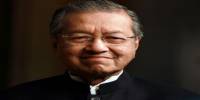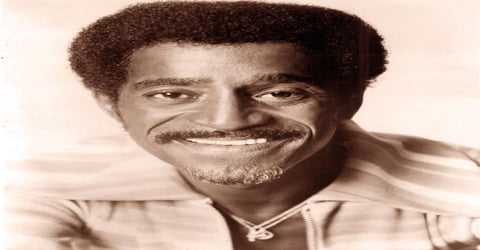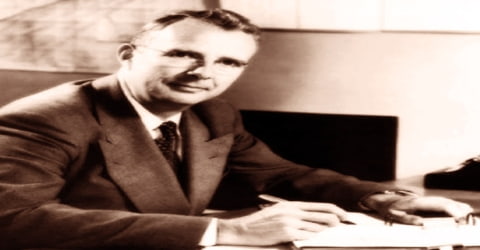Biography of Robert Noyce
Robert Noyce- American physicist, engineer.
Name: Robert Norton Noyce
Date of Birth: December 12, 1927
Place of Birth: Burlington, Iowa, United States
Date of Death: June 3, 1990 (aged 62)
Place of Death: Ascension Seton Medical Center Austin, Austin, Texas, United States
Occupation: Physicist, Engineer
Father: Ralph Brewster Noyce
Mother: Harriet May Norton
Spouse/Ex: Elizabeth Bottomley (m. 1953-1974), Ann Schmeltz Bowers (m. 1974-1990)
Children: 4
Early Life

An American physicist, engineer, and inventor, who co-founded Fairchild The semiconductor in 1957 and Intel Corporation in 1968, and co-inventor of the integrated circuit, a system of interconnected transistors on a single silicon microchip, Robert Noyce was born on 12th December 1927, in Burlington, Iowa the third of four sons of Reverend Ralph Brewster Noyce and Harriet May Norton. Noyce was a champion diver, with a doctorate from MIT and a mind so quick that his friends called him “Rapid Robert”.
Robert Noyce began his career as a research engineer for Philco Corporation and later Shockley Semiconductor Laboratory. However, his stint at both the companies was short-lived. He co-founded the influential Fairchild Semiconductor Corporation, in 1957. It was during this time that he co-invented the integrated chip that revolutionized the semiconductor industry. His thirst for more led him to co-found Intel Corporation in 1968. He made his second breakthrough by giving the world the first microprocessor, in 1971. The microprocessor ushered the era of the computer age and fuelled the personal computer revolution thus giving that stretch of California its well-famed name, the Silicon Valley. Intel’s huge success came in part due to Noyce’s relaxed management style. He wasn’t the flashy boss types and instead encouraged teamwork in employees. It was his unique style that has become a model for many Silicon Valley success stories. He also served as a mentor to future bigwigs such as Steve Jobs
Childhood, Family and Educational Life
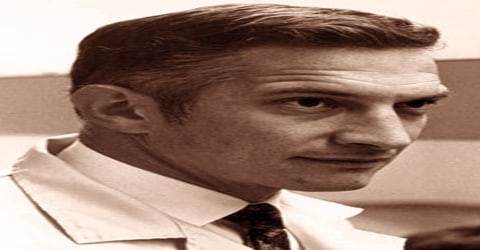
Robert Noyce, in full Robert Norton Noyce, was born on 12th December 1927 to Reverend Ralph Brewster Noyce and Harriet May Norton, in Burlington, Iowa, The U.S. His father was a Congregational clergyman. Robert Noyce was the third of the four sons born to the couple. Noyce had three siblings: Donald Sterling Noyce, Gaylord Brewster Noyce, and Ralph Harold Noyce. His earliest childhood memory involved beating his father at ping pong and feeling absolutely shocked when his mother reacted to the thrilling news of his victory with a distracted “Wasn’t that nice of Daddy to let you win?” Even at the age of five, Noyce felt offended by the notion of intentionally losing at anything. “That’s not the game”, he sulked to his mother. “If you’re going to play, play to win!”
Noyce displayed a talent for creating and inventing things from his childhood. At the age of 12, he built a small aircraft with his brother, which the boys used to fly from the nearby rooftops. Noyce also built a radio by himself and added a washing machine motor to his sled to make it run on its own. Noyce was an intelligent student and did well at mathematics and science.
Graduating from Grinnell High School in 1945, Noyce enrolled at the Grinnell College. His talent for mathematics and science helped him earn double majors in Physics and Mathematics and a Phi Beta Kappa key in 1949. Noyce also received a signal honor from his classmates: the Brown Derby Prize, which recognized “the senior man who earned the best grades with the least amount of work”. His sharp acumen and bent for physics took his academic studies forward as he gained admission at Massachusetts Institute of Technology for a doctoral program in physics. Noyce received his doctorate degree in physics in 1953 for a dissertation in transistors, a technology he was deeply fascinated by.
Personal Life
Robert Noyce married Elizabeth Bottomley, in 1953. She was a 1951 graduate of Tufts University. The couple was blessed with four children: William B., Pendred, Priscilla, and Margaret. After almost twenty years of marriage, the couple legally separated in 1974.
On 27th November 1974, Robert Noyce married Ann Schmeltz Bowers. After her stint as the Director of Personnel for Intel Corporation and Vice President of Human Resource for Apple Inc, she currently serves as the Chair of the Board and founding trustee of Noyce Foundation.
Robert Noyce kept active his entire life. He enjoyed reading Hemingway, and he flew his own airplane and also participated in hang-gliding and scuba diving.
Career and Works
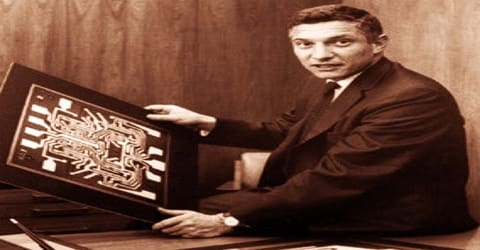
In 1953, Robert Noyce’s first job was as a research engineer at the Philco Corporation in Philadelphia. He moved to California, in 1953. Therein, he joined William Shockley’s Shockley Semiconductor Laboratory. However, Shockley and Noyce’s scientific vision clashed over the poor quality of management of the former. Having failed to force Shockley out of his management position, Noyce and his seven colleagues resigned from the company, thus becoming the ‘traitorous eight’.
In the summer of 1956, Noyce formulated an important concept, that quantum mechanics “tunneling”, which existed only as a theoretical postulate could be demonstrated in a simple P-N junction. Noyce brought his lab book entry to Shockley, fully expecting him to be impressed. Instead, “the boss showed no interest in the idea.” On January 15, 1958, almost exactly 17 months after Noyce noted his ideas, a Japanese scientist named Leo Esaki published an article in the prestigious Physical Review, describing the same negative resistance diode. The article caused quite a sensation in the electronics community. Noyce was irritated, primarily with himself for not pursuing his ideas even after Shockley dismissed them. “If I had gone one step further,” he told his friend, Moore, “I would have done it.”
By early 1957, however, engineers at the new company had rebelled and attempted to force Shockley out of his management position, arguing that his poor management delayed production and adversely affected morale. Noyce and seven colleagues, among them Gordon Moore, resigned after failing to remove Shockley. With Noyce as their leader, the group labeled the “traitorous eight” by Shockley successfully negotiated with the Fairchild Camera and Instrument Company to form a new the company, Fairchild Semiconductor Corporation, located in Santa Clara.
At Fairchild, Robert Noyce was involved with producing transistors and other elements on large silicon wafers. He first cut the components out of the wafer, and later connected individual components with wires. Soon, Noyce realized that cutting the wafer apart was an unnecessary process. He could instead manufacture an entire circuit on a single silicon wafer, which included transistors, resistors, and other elements, thus leading to the idea of the integrated circuit. Noyce invented the integrated chip at Fairchild. It was essentially a silicon chip with a number of transistors all etched into it at once. His discovery was no less than a revolution for the semiconductor industry.
Noyce and coinventor Jack Kilby, who was working at Texas Instruments Incorporated, thought along similar lines, shared the patent of Integrated Circuit design. They both saw the importance of the wafer and each of their companies received patents on various aspects of IC design and manufacture. But Noyce saw further. Noyce saw that the solution to the problem of connecting the components was to evaporate lines of conductive metal (the “wires”) directly onto the silicon wafer’s surface, a technique known as the planar process. Kilby and Noyce share credit for independently inventing the integrated circuit. However, after much litigation, Fairchild Semiconductor was granted the patent on the planar process, the basic technique used by subsequent manufacturers. The patent made both Noyce and Fairchild wealthy.
In 1968, Robert Noyce and Gordon Moore founded Intel when they left Fairchild Semiconductor. Arthur Rock, the chairman of Intel’s board and a major investor in the company, said that for Intel to succeed, the company needed Noyce, Moore and Andrew Grove. And it needed them in that order.
Intel was the first company to produce microprocessors, which were small chips that could both store and process information. Intel is still the leading producer of microprocessors today. Noyce served as the President of Intel until 1975, and thereafter the chairman of the board of directors until 1978, after which he left to serve as the chairman of the Semiconductor Industry Association (SIA).
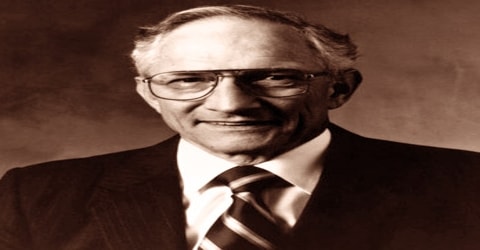
Noyce played an important role in establishing Sematech, a joint industry-government a consortium formed with sometimes conflicting goals research to keep the American semiconductor industry at the forefront and efforts to maintain a domestic semiconductor manufacturing capacity. Noyce became Sematech Inc.’s first president in 1988.
Robert Noyce shunned fancy corporate cars, reserved parking spaces, private jets, offices, and furnishings in favor of a less-structured, relaxed working the environment in which everyone contributed and no one received lavish benefits. By declining the usual executive perks he stood as a model for future generations of Intel CEOs. At Intel, he oversaw Ted Hoff’s invention of the microprocessor, which was his second revolution.
Awards and Honor
In 1966 Robert Noyce received the Franklin Institute’s, Stuart Ballantine Medal. He was awarded the IEEE Medal of Honor in 1978 “for his contributions to the silicon integrated circuit, a cornerstone of modern electronics.” He was awarded the National Medal of Science, in 1979. Noyce was elected a Fellow of the American Academy of Arts and Sciences in 1980.
In 1987 President Ronald Reagan awarded Robert Noyce the National Medal of Technology.
In 1989, Noyce was inducted into the US Business Hall of Fame by then-President George H. W. Bush. The National Academy of Engineering awarded him it’s 1989 Charles Stark Draper Prize.
In 1990 Robert Noyce along with, among others, Jack Kilby and transistor inventor John Bardeen received a “Lifetime Achievement Medal” during the bicentennial celebration of the Patent Act.
Death and Legacy
On 3rd June 1990, Robert Noyce suffered a heart attack at age 62 at home and later died at the Seton Medical Center in Austin, Texas, U.S.
Noyce’s career experienced its first breakthrough while at Fairchild Corporation when he invented the integrated chip. It was a chip of silicon that had many transistors etched to it all at once. The invention revolutionized the way the semiconductor industry worked until then. His second big career breakthrough came right after he founded Intel in 1968. Noyce introduced to the world the first microprocessor and with that started the glorious era of the computer age. Microprocessor included multiple circuits on a single silicon chip, thus allowing both information storage and information processing.
On 8th December 2000 According to the book ‘The Innovators’ Noyce was mentioned/credited as the honorary co-recipient in the Nobel Prize acceptance speech given by Jack Kilby. The science building at his alma mater, Grinnell College is named after him. Noyce is popularly referred to as the Mayor of Silicon Valley.
Information Source:

